
The legendary Rare shooter, one of the best games in history, turns 20 years surrounded by rumors about a new installment in Xbox Series X. We remember the reasons for its success and analyze the reasons why it should return.
There's still cake in the fridge, confetti on the floor, and half-finished glasses. It is as if the party had been yesterday. On May 22, Perfect Dark celebrated its 20th birthday and did it all out loud. As every year, the game put on its best clothes and brought out its 97 in Metacritic, the one that accredits it as the second highest-rated title of Nintendo 64 (to see who is the smart one who coughs Ocarina of Time) and the Best rated in Rare history. During the celebration, Joanna and company sparked rumors about a possible reboot in the form of a new installment for Xbox Series X. A rumor that seems more like an open secret and that has focused on The Initiative, the mysterious secret study of Microsoft . In addition, since this time it was a special date, the original creators of the mythical shooter staged a reunion that neither that of Operación Triunfo. Eurogamer spoke with them at a fascinating round table and all kinds of anecdotes about their development came up. Today at FreeGameTips, with the hangover from the birthday still beating in our head, we wanted to pay another particular tribute to the Perfect Dark saga. We will do so by remembering the reasons why we fell in love back in the year 2000, but also by echoing the best curiosities of that reunion and reviewing and reflecting on all the reasons why the series should return. Because Perfect Dark has it all to be the ace up your Xbox sleeve.
A new face for Xbox
The Microsoft pantheon is full of great characters, but it is still that, a pantheon. Buried within are names that have stopped ringing people (as is the case with Blinx) and others that are still remembered and desecrated from time to time, but that are just as dead and wasted (such as Conker or the Banjo-Kazooie duo ). When thinking about the faces that today serve as an image for the Xbox brand, it is difficult to deny that they are the same as always. Hardly are the Master Chief, Cortana and Marcus Fenix. Over the years we have had some interesting candidates (Alan Wake, Ori and Cuphead, for example), but none have finished raising their voices or presenting themselves as such. They may be missing the chevrons that come with the first party label. And perhaps the only exception to all this is that of Kait Diaz, worthy heir to Gears of War. But in any case, there is a very simple and obvious solution to this problem: recover Perfect Dark, also known as Joanna Dark.
 Perfect Dark is just one of the many sagas that lie in the Microsoft pantheon, most of them deserving of a second chance. Maybe on Xbox Series X?
Perfect Dark is just one of the many sagas that lie in the Microsoft pantheon, most of them deserving of a second chance. Maybe on Xbox Series X?
Who's Joanna Dark?
The extremely young secret agent of the Carrington Institute, named Perfect Dark for the record score she achieved during her training and education, was conceived as "more than just tits and an ass." So clear is David Oak, one of its creators, when talking about Joanna. Oak has recognized on more than one occasion that Rare designed the character by looking at Lara Croft out of the corner of his eye and wanting to distance himself from her. They wanted to break stereotypes and not base Joanna's appeal on how sexualized her outfit was. Something ironic if we consider that, at the same time, what they were looking for was a feminine version of James Bond, ideal of masculinity and champion of stereotypes. In any case, Rare was looking for that, a kind of Pierce Brosnan with the appearance of Winona Ryder, the movements of Laurie Sage and the wardrobe of Emma Peel, three references that they always quote. A protagonist who was brilliant in her own (killing people), who had a forgiving attitude ("strong and independent", as the topics would now say) and who seduced us through her cynicism and sense of humor. The result was a spy halfway between Motoko Kusanagi (from Ghost in the Shell) and Judge Hershey (from Judge Dredd, and specifically Stallone's adaptation). What more could we ask for in the late 1990s?
To tell the truth, the script for Perfect Dark never had an especially memorable story (although it was very funny, yes) and during the missions Joanna barely had a handful of phrases. But it was enough for her. It worked. He was one of those characters that stuck in your mind and, to be honest, we shouldn't be too surprised either. The 007 saga continues to function with more than 50 years, six protagonist changes and almost 25 films. It is like the formula of Coca-Cola and Rare, it was perfectly known. After all they had access to it when they took care of the GoldenEye game. The thing is, people became so attached to Joanna that some haven't yet forgiven the red-haired version of her prequel, Perfect Dark Zero, and this one continues to spark absurd debates, as if it were the choice of successor for Daniel Craig. (By the way, it is not to put the finger in the sore but according to the novels she is a natural redhead and in the first title she had just dyed). Rare came up with a name that sounded like Joan of Arc (Joanna Dark / Joan of Arc) and the legend spread that it had been a vindictive and premeditated gesture. A Tinder “match” that, as the studio would recognize years later, was based only on that it sounded good and seemed to give it a certain background. It is actually based on "more than 20 different characters". What happened later with Halo and “the mystique of the Master Chief” happened with Joanna. His voice was "so cool" and it appeared so little that there came a time when each nonsense he said seemed epic, important, transcendental. She did not have a Spartan armor, but she changed her outfit every two by three and it must be admitted that she started all the missions with a fairly “badass” kinematic sequence. He certainly knew about staging. Is there a better reason to become the new face of Xbox than to have such a bond with the Master Chief?
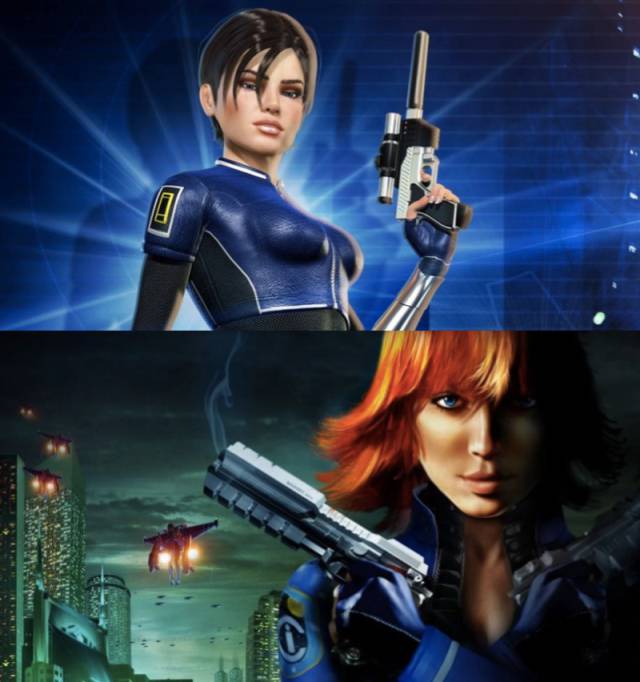 Above, the Joanna from the Xbox 360 remake (which was already a bit far from the original). Below, that of Perfect Dark Zero, its prequel.
Above, the Joanna from the Xbox 360 remake (which was already a bit far from the original). Below, that of Perfect Dark Zero, its prequel.
Reasons to trust Joanna
Yes, there are several. One of them could be, for example, that Joanna's charisma and design were also able to withstand one cover … or two … or three, since her first adventure was launched with three different covers. One for Europe, one for the American market and a third for Japan. And whoever talks about holding a cover speaks all the promotion and marketing paraphernalia that is presupposed to the spearheads of Microsoft. Joanna proved to be one of those characters they catch. Another reason is that while the first game was for the Nintendo 64 and the second for the Game Boy (i.e. both exclusive to Nintendo), Perfect Dark Zero was one of the Xbox 360 launch titles, where a fourth installment was canceled. (Perfect Dark Core) and where we also have a remake of the original. Even Xbox One has had its (brief) portion of the saga thanks to the appearance of it in Rare Replay. Despite her nintendero origins, Joanna has been associated with the people of Redmond for more than 15 years and it is not only because she was among the IPs that Microsoft acquired by taking Rare. What is going, has already proven to have a leading role in the history of Xbox.
As a third reason, it could be argued that recovering Joanna would also be bringing an important character casting back to life. The cast of the game was inspired by actors like James Robertson Justice (who played Joanna's boss, Daniel Carrington), Billy Zane (as one of the villains, Trent Easton), Richard Biggs (the president of the United States in that "spy universe"). -fi ”) or Götz Otto (mythical Mr. Blonde). We are going that a new delivery could mark a Star Citizen and mount a campaign of great names, as it will do with Mark Hamill, Gillian Anderson and Henry Cavill. We could continue with more and more reasons, but perhaps a fourth and final one will suffice. That after all, he is a character who lends himself perfectly to being reinvented, updated and deepened in it, as happens with James Bond from time to time. We have barely scratched its surface. His mirror could be Lara Croft (and his recent trilogy), curiously the one from which he initially wanted to distance himself. Another one of those naughty winks that fate occasionally allows itself.
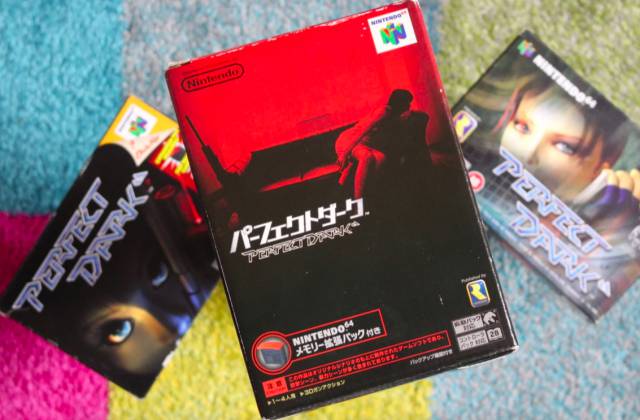 On the left the American cover, in the center the Japanese and on the right the European. Like Bond, Joanna has always been a character that lends itself to different approaches and approaches. Isn't the European "very Lara Croft"?
On the left the American cover, in the center the Japanese and on the right the European. Like Bond, Joanna has always been a character that lends itself to different approaches and approaches. Isn't the European "very Lara Croft"?
A universe at the height of Blade Runner
If Joanna was interesting, what to say about the universe around her, which was much more so. A world of cyberpunk aesthetics that drank without shame from Blade Runner. In it we visited cities like Chicago, but set in a dystopian 2023 in which everything was skyscrapers, little lights and flying cars. It was the story of a conspiracy and the missions showed a world dominated by large companies and corporations. The first levels were between rooftops, large glass offices and secret laboratories, but they also showed the "shadow" part of those skyscrapers, the one where people were crushed by institutions. Phases with alleys and ground-level culverts where there was nothing but graffiti, garbage bins, and neon signs. Only the hologram of Ana de Armas in 2049 was missing there.
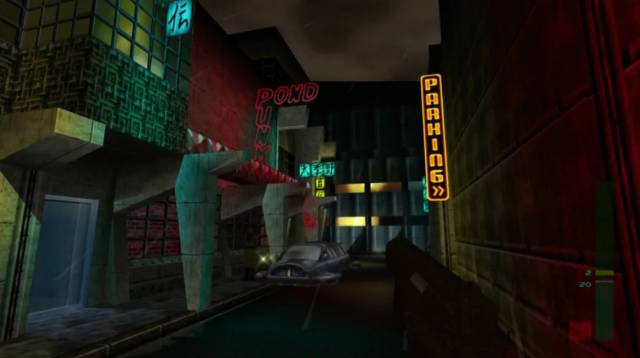 The game started out as a cyberpunk dystopia set in the year 2023 and very soon moved on to the great science fiction classics: alien invasions and visits to strange planets.
The game started out as a cyberpunk dystopia set in the year 2023 and very soon moved on to the great science fiction classics: alien invasions and visits to strange planets.
However, the best came later, when suddenly the game gave him to lose his mind and lose his mind. Before we knew it, Perfect Dark went from cyberpunk to more classic science fiction and made us visit Area 51 and Air Force One, among many other sites, while fighting an alien invasion and going everywhere accompanied by an alien. (unbearable) named Elvis. It is as if the title suddenly drops Ridley Scott's hand and begins to taste everything that comes to mind. As if he unbuttoned his raincoat and showed us what he was wearing underneath. (Don't think badly, we are referring to a T-shirt from the X-Files and a pin from Nikita). There was a point when Joanna herself did not know how to react in the cinematics to the nonsense that passed before her eyes. Just remember that sequence in which she is told that she has to rescue the alien, she escapes a "What the hell is that?" and his intelligence chief ignores him and responds with a terse “Any questions? No? Great". The game was hilarious, one of the most diverse and imaginative first person shooters back in 2000, and in fact we dare say it still is.
Furthermore, even with the absurd and irreverent of some situations, the title never fell into the ridiculous. There may have been aliens masquerading as Scandinavians, computers with eyes and wings that had a life of their own, clones (or should we say replicants?) Who wanted to supplant the president and even a Martian who owed his name to the King of Rock himself, but what said, Perfect Dark never felt ridiculous. That was just the cotton test for its gameplay. It was so good at a playable level that it made us “buy” and embrace all those ideas without asking questions and with a smile on our faces.
 Elvis only liked three things: getting in front of our peephole, dying and fucking the whole mission.
Elvis only liked three things: getting in front of our peephole, dying and fucking the whole mission.
The inkwell is still full of ideas
Without a doubt, one of the great reasons for the return of Perfect Dark would be to delve deeper into such a universe and recover some of the follies that remained in the pipeline. The original team members always claim that there was a lot of material that was not used in the final version, especially when it comes to the story. "We did not want long and elaborate cinematics because everything revolved around the action," they commented during the reunion. For this reason, it was ruled out to develop the plot and characters too much, the background of Jonathan Dark, Velvet Dark, Elvis and the skedar falling down the road. The first, to give an example, was going to be Joanna's own brother, but ended up as a mere secondary that appeared in the mission of Area 51, where we could decide if he came out alive or died (yes, yes, 20 years ago the shooters had more choice than they do now.) For his part, Velvet was a character that only appeared if we played cooperatively. It was what player 2 looked like. But as with Jonathan, it was suggested that she be Joanna's twin sister and have an important role (so important that she was even considered to have her own spin off). In the end they took it off her and it was reduced to a version of Joanna with a blonde wig. A version that only opened its mouth and appeared in the cinematics if player 2 was the first to complete the level (and in that case he replaced Joanna and said the same phrases as her). In turn, Elvis was going to have many more lines of dialogue and references to his namesake, with multiple winks to American culture, which they wanted him to be totally in love with. Unlike the rest, if it did not develop further (we still thank you for it) it was due to the licensing and copyright problems that your script raised. And as for the skedar, it seems that the team wanted to explain their motivations and make us feel some empathy for them. He wanted to tell the story of how their home planet collapsed and how this forced them to take extreme measures. So that at least we understood the reasons for their actions and that it was not all black and white, or good against evil. What would Perfect Dark have been like with all these little variations?
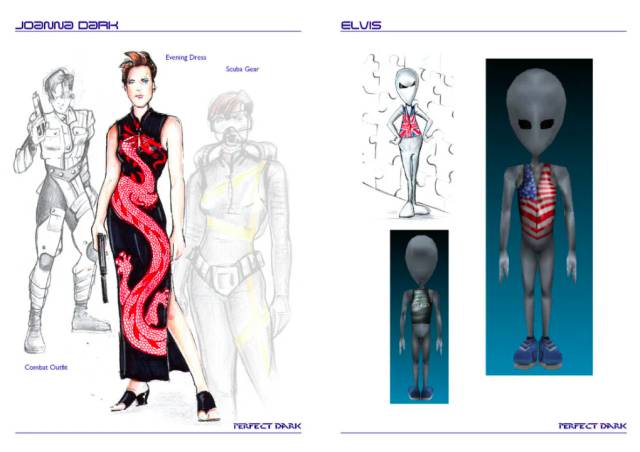
 Some of the designs by Brett Jones, developer of Rare.
Some of the designs by Brett Jones, developer of Rare.
Something different in the Xbox Game Studios catalog
The video game sector has changed a lot in the last 20 years and the narrative has been gaining weight with each new generation. Although all Perfect Dark should have its gameplay as the main incentive, a new installment could take advantage of such a universe and expand the Xbox Game Studios catalog with a title in which the story is also essential. Aside from Hellblade, Halo or Gear of War, there are not too many titles like this in the Xbox family, and even the latter two may have the odd plot complication for newcomers. Many of the current exclusives (Sea of Thieves, State of Decay and Ori, among others) have that section as something secondary. Perfect Dark and Joanna could fill that gap in the catalog perfectly. Something that would also make him compete, saving the distances, with the exclusive ones of the PlayStation factory, due to a more cinematic approach (that is not understood as a lack of gameplay, but as a compliment to its history and characters). The return of the franchise would be a suitable addition to Xbox Series X.
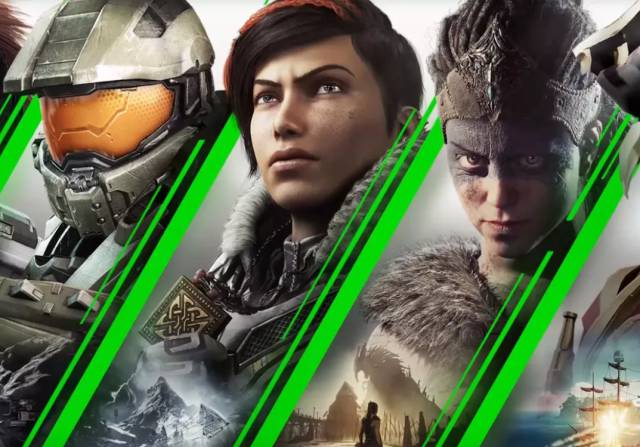 The character fits perfectly into Xbox Game Studios and could fill some of the brand's first party shortcomings.
The character fits perfectly into Xbox Game Studios and could fill some of the brand's first party shortcomings.
Expanded universe
There was such richness and content when it comes to characters that the game had, in addition to Perfect Dark Zero (a prequel to Xbox 360), plenty of books and extras that delved deeper into its universe. This is the case of two highly recommended novels for fans of the saga: Perfect Dark: Initial Vector (which tells how Joanna stopped being a bounty hunter and started working for the Carrington Institute) and Perfect Dark: Second Front (in which someone He killed two of the members of the Institute and left clues that incriminated Joanna, who had to clear her name and face some ghosts from her past). Both had quite a pull in the Anglo-Saxon countries and were written by Greg Rucka, a famous comic writer who works regularly for DC and who has even received five Eisner Awards, the Oscars from the world of comics. In this area, Perfect Dark also had some success and launched four comic series that were even set a year after the events of the original story and were made with the team of cartoonists of Joe Madureira, an old acquaintance in the video game sector thanks to the Darksiders saga.
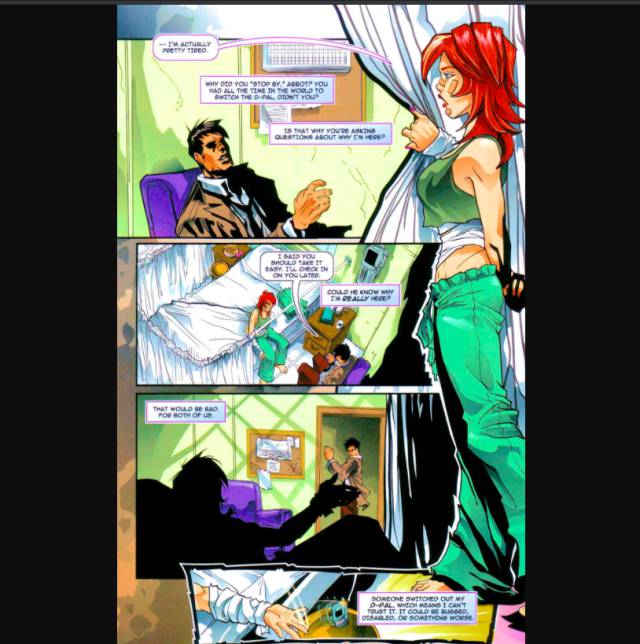 Perfect Dark never finished falling into oblivion. The story continued in several novels and comics, some of them quite successful that had behind great DC cartoonists and teams like Joe Madureira (Darksiders). In the photo, Perfect Dark: Janus' Tears.
Perfect Dark never finished falling into oblivion. The story continued in several novels and comics, some of them quite successful that had behind great DC cartoonists and teams like Joe Madureira (Darksiders). In the photo, Perfect Dark: Janus' Tears.
And all that speaking only of history. The designs that were never used are still accumulating online and the ideas for enemies and locations have not stopped growing all this time. The latest films in Mission Impossible, Kingsman or The Bourne Case have reinvented the collective imaginary for the spy genre, not to mention tapes in the line of Paul or the original Men in Black trilogy, which in recent decades have left more ideas to continue dealing with the subject of aliens with a sense of humor. The foundations of the original opened so many doors that there is an unlimited source of resources that could be drawn upon for his return. There are so many types of focus, tones and storylines that it would be one of the easiest sagas to bring back for the freedom and creative possibilities it would offer its developers. To this we would have to add the graphic finish and the production levels that it could reach in Xbox Series X, and that would make it very difficult to resist a setting like that of Blade Runner (there is the success of The Red Strings Club or the enormous expectation raised by games like Cyberpunk 2077 and The Last Night). On top of that we could forget about the visual problems of the original, which pushed Nintendo 64 so far that it needed the so-called "memory expansion pack", which added 4 MB to RAM. Even so, the game offered a very fair framerate, especially in cooperative mode, and perhaps that was the only reason that separated it from the perfect score in Metacritic.
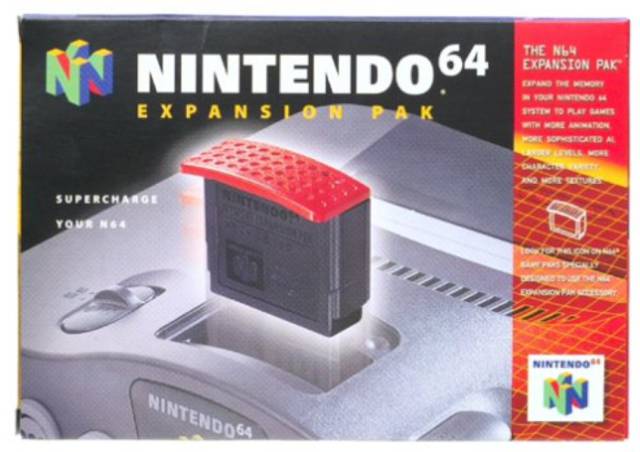
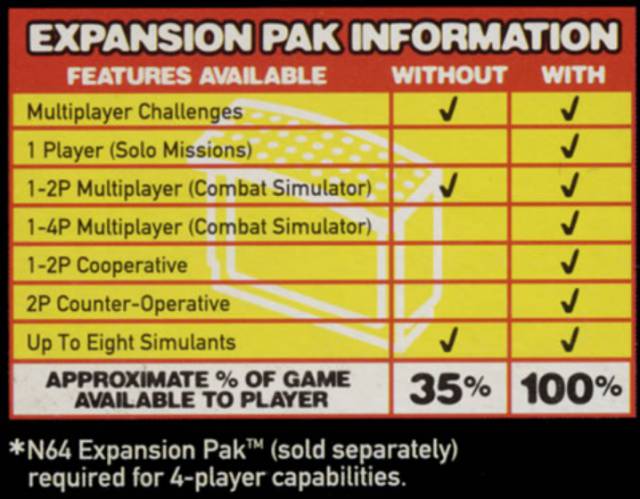 The mythical 'expansion pack' that expanded 4 MB of Nintendo 64 RAM was not even enough for the graphics of the game. His framerate was what robbed him of a perfect score on Metacritic.
The mythical 'expansion pack' that expanded 4 MB of Nintendo 64 RAM was not even enough for the graphics of the game. His framerate was what robbed him of a perfect score on Metacritic.
A shooter for history
But let's stop the nonsense. If Perfect Dark earned a place in our hearts for something, it's because of its playable proposal. The title was a head-to-toe shooter. Fast and uncomplicated action, with many moments when it went at such a speed and demanded such reflexes that it seemed that we were playing Doom. But at the same time, Perfect Dark was always far from being a "kill killer". First of all because of Metal Gear Solid (released in 1998, a year after GoldenEye). Kojima's work permeated the members of Rare and new and original mechanics were added that also gave rise to light doses of stealth. Thanks to that we could activate / deactivate alarms, peek out from the corners without being seen, cover ourselves behind different types of objects and covers, shoot at the lights of a room and leave it completely in the dark, etc. The second reason (and the most important) was the objectives that were in each mission. These were the reason why Perfect Dark did not consist only in pulling forward and dragging with as many enemies as they crossed our path. At each level we had to overcome a series of requirements and these could not be more varied. Escorting and protecting a character, releasing hostages without the alarm going off and killing them, deactivating bombs, hacking security systems, disguising and infiltrating certain places, attending secret meetings and taking photos with a spy camera, sabotaging vehicles … Most of the objectives of each level could be met in the order that we wanted and demanded that we investigate everything. The stages were authentic labyrinths, of medium size and very vertical (with infinity of stairs and heights), in which we lacked any type of compass or guide system. There was no one to lead us by the hand. We were the ones who had to decide the route and find what we needed. Also, there were no medicine cabinets (not to mention the regeneration of life) and if we screwed up a target, we had to start the whole level again. (Now you would say that hateful phrase of "it was the souls of the FPS"). It had, in short, an adventurous touch that unfortunately the genre has been losing over the years.
Rare's fetish with weapons
To such a proposal must be added an unforgettable repertoire of weapons and gadgets, as imaginative and delusional as its history. There were about thirty weapons, many could be carried by two hands and, most amazing of all, they all had primary and secondary fire! We found crossbows, tranquilizer dart pistols, weapons that were transformed into a laptop to go unnoticed, submachine guns with a type of ammunition that allowed them to target an enemy and make bullets follow, rifles with an attached grenade launcher that allowed us to shoot explosives and even deciding how long it took them to detonate, night vision and X-ray glasses, weapons that are capable of firing through walls, others that turned enemies against their own and put them on our side, not to mention from a handful of grenades and proximity mines, or from machine guns that were capable of acting as independent sentry turrets. There was no filter or limit of any kind. Virtually any subsequent shooter is scalded if we compare its arsenal with Perfect Dark. Even the reload animation was worth watching. Rare's fetish with weapons can only be compared to Tarantino's with his feet.
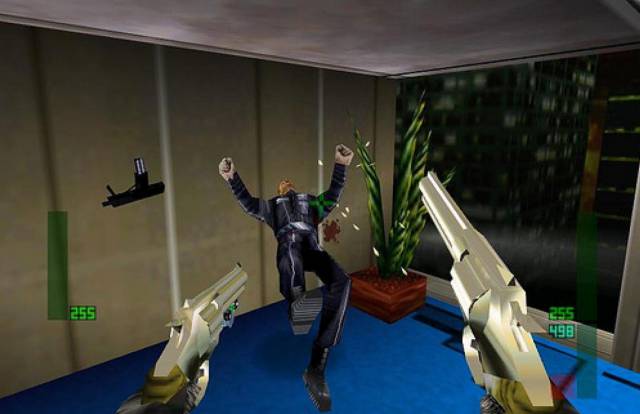 Twenty years later, there is still no shooter capable of standing up to it when it comes to weapons and inventory.
Twenty years later, there is still no shooter capable of standing up to it when it comes to weapons and inventory.
Ahead of its time
You will think that we exaggerate, but the virtues of Perfect Dark do not end there. He contributed ideas that can only be described as revolutionary and that unfortunately did not end up becoming a standard. One of them had to do with the issue of difficulties. Going from easy to difficult, most games are limited to raising the level of damage done by enemies and increase their life bar. Some brave put more of them, but little more. In the case of Perfect Dark the difficulty system was one of the best ever. Between easy (Agent difficulty) and difficult (Perfect Agent), what changed was, in addition to the topic of damage and health, the number of objectives in each level. One of the first, for example, proposed that we get from the ground floor of a building to its roof. Well, if we were at the lowest difficulty we hardly had to focus on ascending by emptying the magazine. If we put it in normal (Special Agent) there were some elevators blocked and we had to search the local offices for a way to activate them again. And in the case of Perfect Agent that was already a continuous climax. There was a helicopter circling the building shooting at us from the outside and blowing the windows through the air as we tried to complete all of the above. In a later mission, to take another example, at easy we started with a sniper rifle escorting an undercover agent. We cleared the area of enemies from a high position and took over. In difficult we were that infiltrator, we were unarmed and we were caught as soon as we started. We had to run towards an enemy to disarm him, grab his weapon and defend ourselves while all kinds of snipers were aimed at us, before whom we lacked any kind of advantage. In other words, each phase could change completely depending on the difficulty in which we played. Nothing like it has been seen again.

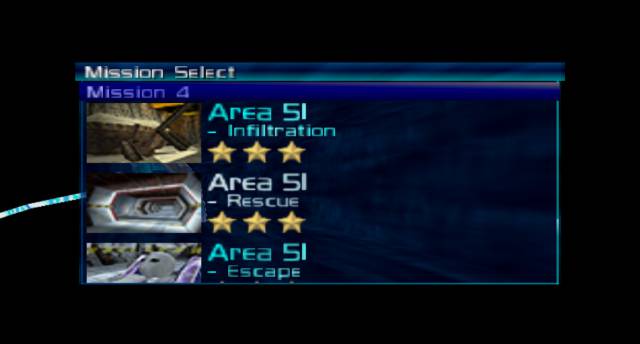 The missions had their own statistical table and each one had different objectives that we had to complete to overcome them. Depending on the level of difficulty, the objectives multiplied and the experience changed completely.
The missions had their own statistical table and each one had different objectives that we had to complete to overcome them. Depending on the level of difficulty, the objectives multiplied and the experience changed completely.
It was not his only novel idea. He also had, for example, light-headed notions of backtracking, brilliant artificial intelligence, and a HUB between worlds. There were levels that were divided into several phases and in the last one we used to go through the same rooms as in the first one (although in the opposite direction and with a different distribution of enemies, as well as new objectives). Well, the game recorded some of the things we did when we started and then remembered and collected them when the level was repeated. They could change various details of the level and even the course of the story. The most obvious change is the one we were talking about before Jonathan Dark, whose life was in our hands and, if we saved him, later appeared on a future mission. Meanwhile, artificial intelligence was another of the sections that was ahead of its time. It offered enemies with different behavior patterns (which we will investigate later) and many different ways to react to bullets depending on where we shot them (with better animations than some current games). By proxy we could even disarm them if we aimed well and hit them in the hand. They limped, they put a hand on their shoulders, they fell knocked down – not dead – at point-blank shooting, headshots were lethal … To all this was added a base or "HUB" from which we could access all levels. At any time we were allowed to leave the menu and visit the Carrington Institute itself, where we were allowed to practice marksmanship, test weapons, train with bots or simply chat with the characters in the story. A resting point for the rest of the modes that years later were incorporated into games like Call of Duty: Black Ops III.
Passion for detail
It remains to remember things before which it is impossible not to evoke a smile. Winks, details, easter eggs and, in general, samples of good taste and an authentic passion for video games. From his unprecedented destruction and physical system (with that spectacular scene in a cellar where everything was blown up) to the unforgettable appearance of Miyamoto as a playable character. Not to mention the possibility of driving a hovercraft and secrets like "the cheese one." On each level there was a piece of cheese hidden and to find them all we had to, for example in Air Force One, get a man who was in the bathrooms to come out and let us into his sink, where there was a wedge. If there were even secret lines of dialogue. Everything breathed a high level of care and affection.
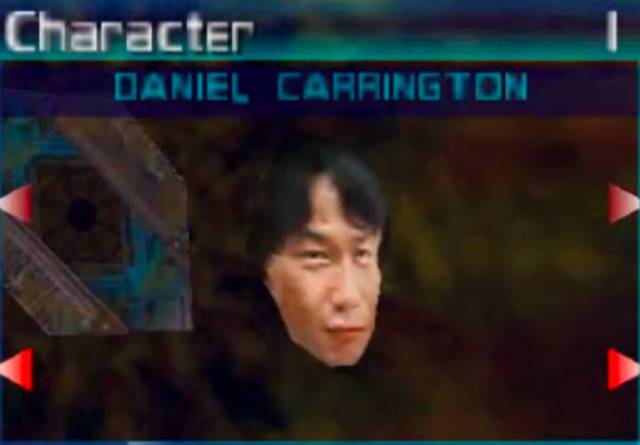 The game had all the "magic" of Nintendo … or at least Miyamoto, which is no small feat.
The game had all the "magic" of Nintendo … or at least Miyamoto, which is no small feat.
The best local multiplayer ever?
But if anything made our hour meter run out of batteries, that was the local multiplayer. This is where Perfect Dark ended up getting into the Olympus of the greatest and where many of us spend most of our hours. In the year 2000, there were not too many shooters that allowed one to have that option, so we welcomed that one willingly without knowing that we were facing the best that we would try in our lives. It is impossible to remember all the options it offered. We could play split screen (with vertical or horizontal option) and enjoy the campaign in full, either in cooperative mode (with or without friendly fire), or in competitive mode. In other words, brothers and friends could help us complete the missions … or become enemies to try to make things even more difficult for us. A pioneer of the asymmetric multiplayer so fashionable in recent years. In addition this one worked surprisingly well and player 2 could choose between the different characters, he had respawn if we killed him and they even had a suicide pill in the Matrix plan, in case he wanted to change his appearance and strategy. Player 1 was never told which CPU character his partner was driving (although looking at the other's screen has always been there). To this was added a mode with bots, the best of all, which was called Combat Simulator that allowed up to 8 players (4 locals and 4 bots) on 15 different maps and even had an option to choose the style of play of each bot and their artificial intelligence. It was up to us if we wanted to face conservative, stealthy rivals, experts in explosives, professionals of short distances, cowards, armed with shields, etc. The final tie was put by the tricks, which gave infinite ammunition, made heads to the characters and offered many other variations that were unlocked by overcoming the campaign mode in the different difficulties. Imagine all the benefits we have been describing (scenarios, types of weapons, artificial intelligence, etc.) and make them available to your own rules. The result was one of the funniest, craziest and most exhilarating experiences ever.
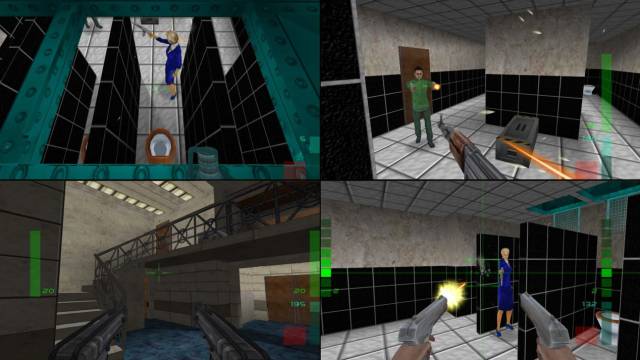 Quake, Halo, Call of Duty … Perfect Dark's multiplayer mode is among the best in the genre and was way ahead of its time.
Quake, Halo, Call of Duty … Perfect Dark's multiplayer mode is among the best in the genre and was way ahead of its time.
Rare, un lugar muy “especialito”
“Sin nuestros juegos, Nintendo estaría fuera del negocio”. Así de tajante se mostraba hace unos días David Doak, uno de los padres del juego, al hablar de la relación entre Rare y la gran N. Y aunque pueda sonar presuntuoso, si uno mira el historial de Rare durante los años noventa, es difícil encontrar otra desarrolladora que creara un número siquiera parecido de obras maestras. Además de GoldenEye y Perfect Dark, el estudio se sacó de la manga sagas y personajes legendarios, como son los casos de Battletoads, Killer Instinct, Conker, Banjo-Kazooie, Donkey Kong Country, Jet Force Gemini y Diddy Kong Racing. Todo esto en una misma generación y menos de diez años, y muchos de esos nombres incluso tuvieron varias entregas en ese período. Quién nos ha visto y quién nos ve. Aunque para repasar su historia en profundidad os recomendamos el artículo ‘La montaña rusa de Rare’, las entrevistas con motivo del 20 cumpleaños han arrojado algo más de luz a cómo era trabajar en la mítica granja que servía de sede a la compañía allá por entonces. Así, por ejemplo, se ha admitido que las jornadas eran de entre 100 y 120 horas semanales, a lo que contribuía que el sitio estuviera aislado y en medio de la nada. Sin embargo, la mayoría de los desarrolladores entrevistados aseguran que no lo consideraban explotación laboral (también conocida como el crunch, la enfermedad de los videojuegos). Al parecer, esas jornadas de trabajo eran parte de la filosofía que compartían todos los empleados, desde los más altos cargos hasta los recién llegados. Todos eran tremendamente ambiciosos y querían hacer los mejores juegos de la industria, para lo que pensaron que era necesario un sacrificio semejante. Al menos estaba bien pagado y aseguran que los bonus y las horas extra se cobraban de forma generosa, lo que les permitieron pagarse a todos sus propios coches y casas. “Seguramente nos pasó factura y afectó en lo personal, no lo sé. Entonces no lo veíamos como algo malo”.
De las entrevistas también se deslizan cierto arrepentimiento ante la desbandada de Rare, que se produjo de manera paulatina y constante mucho antes de su venta a Microsoft. Algunos de los miembros del estudio veían bien el dinero que sacaban Nintendo y el resto de intermediarios por publicar el juego y sacarlo a la venta. Pensaban que ellos eran los que de verdad trabajaban y quienes lo hacían todo. Las desavenencias fueron creciendo y las rescisiones de contrato de unos y otros hicieron más débil la estructura hasta que, en la generación de los 128 bits, el estudio perdió el ritmo al sector, necesitó de la inversión extra de Nintendo y ésta finalmente se negó y optó por vender. Centrándonos en Perfect Dark, durante el desarrollo del juego se produjo uno de los momentos más complicados de la historia de Rare y, al mismo tiempo, un suceso que hacer mirar con buenos ojos y esperanza la posibilidad de que la franquicia vuelve en manos de otro estudio.

 Arriba las oficinas originales de Rare (que terminó mudándose) y abajo parte del equipo tras presentar el juego en el E3 de 1999, donde ganaron el Game Critics Award al mejor juego de consola.
Arriba las oficinas originales de Rare (que terminó mudándose) y abajo parte del equipo tras presentar el juego en el E3 de 1999, donde ganaron el Game Critics Award al mejor juego de consola.
¿Qué pasaría si otro estudio hiciera Perfect Dark?
Como cuentan durante las entrevistas de estos días, los miembros de Rare allá por el año 1997 pensaron que Perfect Dark no les llevaría mucho. Uno, dos años quizás. Pero ya. Querían un juego que se hiciera rápido, saliera pronto y les permitiera desfogarse después de GoldenEye. Que aprovechar el motor y las mecánicas de éste. Eran buenos tiempos en el estudio y los planes sonaban bien… hasta que Martin Hollis dejó la desarrolladora y todo saltó por los aires (en gran medida por los desacuerdos económicos que comentábamos antes). Hollis era uno de los programadores con más talento del grupo y uno de los grandes artífices del título de 007, así que su salida provocó una desbandada de la que formaron parte David Doak, Karl Hilton, Steve Ellis y Graeme Norgate, otras piezas clave del equipo. Todos ellos fundaron Free Radical Design, donde seguirían demostrando su calidad con la saga TimeSplitters. A lo mejor es un poco exagerado decir que Rare había quedado reducida a cenizas, pero desde luego, la fuga de talento fue importante. Aquellos que se quedaron tuvieron que redoblar esfuerzos y terminar un proyecto que de la noche a la mañana se había vuelto mucho más difícil de lo que imaginaban. Cuando Hollis y compañía abandonaron, el título apenas había llegado a su versión alpha y hubo que contratar a gente que no tenía experiencia en shooters, ni en la compañía. Y contra todos los pronósticos, aquellos olvidados se sacaron de la manga el juego de Rare más valorado de todos los tiempos (con un 97 en Metacritic) y uno de los mejores títulos del catálogo de Nintendo 64. Es una historia que merece la pena recordar para los amigos de frases como “la Rare actual ya no es lo que era” o similares. Perfect Dark nació precisamente de un equipo que ya no era el mismo y que cambió por completo. No hay ningún motivo para pensar de forma negativa sobre un potencial regreso a cambio de un estudio distinto, como pueda ser The Initiative.
“No era la primera vez que ocurría”, admitió Brett Jones. “Un montón de gente hacía un único juego en Rare y después se iban a fundar su propia compañía, así que tampoco fue una sorpresa. La gente que vino trajo nuevas y mejores ideas”. Quizás aquello fuera precisamente lo que permitió que Rare tuviera una época dorada en los noventa. Esas continuas entradas y salidas provocaban cosas como que, cuando el equipo recibió un premio BAFTA por las animaciones de Perfect Dark, subieran a recogerlo aquellos que habían terminado el trabajo, mientras los directores originales del mismo estaban entre el público. “Estuvimos aplaudiendo y vitoreando como locos. No teníamos derecho al premio, pero al mismo tiempo sentíamos que también era nuestro, cosa que obviamente no pasa si has abandonado la empresa”, diría Karl Hilton. “Algunos se lo tomaron de manera más personal y dejaron de hablarse. Consideraban que el abandono era una traición”, reconocería también Steve Ellis. Desde luego, y por si la imagen de las oficinas en la granja no lo deja claro, era un lugar muy “especial” a la hora de trabajar. Otra de las anécdotas más habituales recuerda que odiaban los títulos de crédito porque pensaba que todos hacían un poco de todo y porque tenían miedo de que, si ponían de qué se había encargado cada persona, otros estudios vendrían a contratarles y llevárseles. Por eso se inventaban toda clase de puestos extraños, y eso si los ponían. En el caso de los créditos de Perfect Dark, llama la atención ese cargo de “Guns and Visual Orgasms”, por el que Nintendo puso el grito en el cielo al ver el nombre al que acompañaba, Beau Ner Chesluk, cuyo nombre y primer apellido se pronunciaba como “boner” (erección). Sí, sin duda Rare era un lugar muy especialito para trabajar. Pero ya sabéis lo que dicen, los genios están tocados por la locura.
A Xbox Series X solo le pedimos una continuación
Doom, Quake, Counter Strike, Halo, Half-Life, GoldenEye, Metroid Prime, Call of Duty: Modern Warfare… Todos ellos copan los tops del género y son descritos habitualmente como los grandes shooters que cambiaron la historia de los videojuegos. Sin embargo, Perfect Dark únicamente aparece de forma intermitente en este tipo de listas y no se le suele reconocer todo lo que aportó e innovó en su momento. Esperamos haberos recordado algunas de esas virtudes con este artículo y haberle dado a Microsoft más de un motivo para resucitar la saga. Nos da igual si finalmente es en primera o tercera persona, si lo hace Rare o si la responsable es The Initiative. Nosotros lo que queremos es volver a ver a Joanna, volver a ese mundo cyberpunk y a esa ambientación repleta de delirios alienígenas. Queremos escuchar de nuevo una banda sonora de la nunca nos cansaremos y, sobre todo, disfrutar otra vez a los mandos con un título que esté repleto de ideas y posibilidades (single y multiplayer). En el peor de los casos, que estaremos de acuerdo en que fue Perfect Dark Zero, el título rondó el 81 en Metacritic (72 por parte de los usuarios). Así que parece que incluso con esas merecería la pena. Quizás nunca vuelva a alcanzar las cotas de genialidad del original, pero Joanna merece volver a la línea de fuego y así tener una oportunidad más de reivindicar su legado. Crucemos los dedos para que Xbox Series X lo haga posible. Ya lo dice su eslogan, power your dreams.
Happy 20th anniversary, Perfect Dark! From exploring its very-near-future setting to fighting friends with fancy firearms (Laptop Gun! FarSight! Slayer!), let us know your memories of our sci-fi shooter. Not played it? Alien butt is always available for a kicking via Rare Replay! pic.twitter.com/wVG2lxCCiD
— Rare Ltd. (@RareLtd) May 22, 2020

